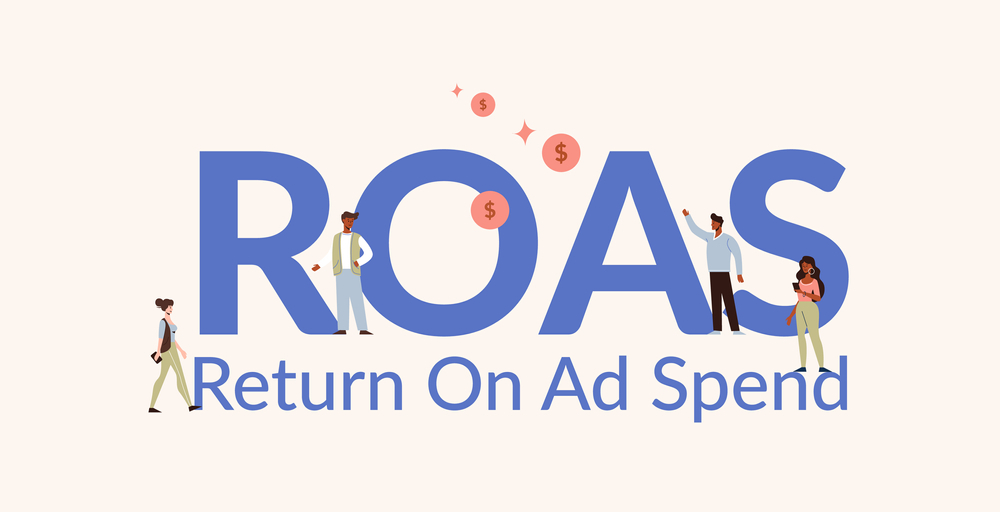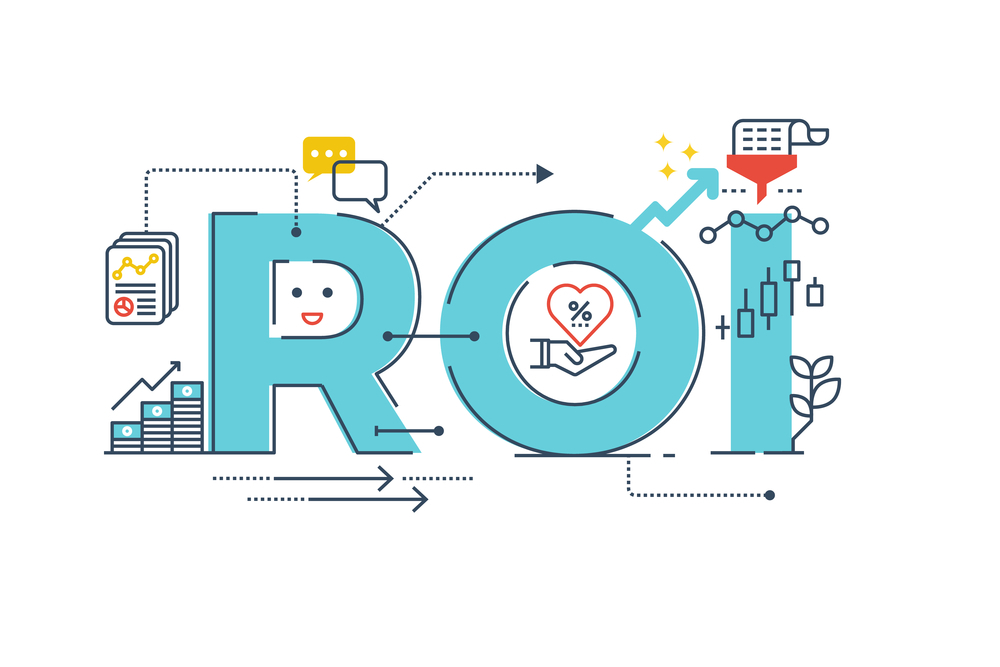ROAS (Return on Advertising Spend) and ROI (Return on Investment) are two key metrics used in marketing and business analysis to evaluate the effectiveness of marketing campaigns and investments. ROAS is a metric used specifically to measure the revenue generated by an advertising campaign in relation to the amount of money spent on that campaign. On the other hand, ROI is a broader metric that can be applied to any type of investment. It measures the return on an investment in relation to the cost of that investment however I will be more concerned about Return on Marketing Investment.
Both ROAS and ROI are important in marketing and business analysis because they help measure the effectiveness of marketing campaigns and investments. ROAS helps marketers determine the revenue generated by an advertising campaign relative to the cost of the campaign, allowing us to determine the effectiveness of our advertising strategies and optimize their marketing budgets. ROI, on the other hand, helps businesses determine the profitability of every other investment, whether it be in marketing directly or other areas such as tools, technology, or personnel. By calculating ROI, businesses can identify the most effective investments and make data-driven decisions to optimize their resource allocation.
The use of ROAS and ROI has become increasingly important in today’s data-driven business landscape. As companies continue to invest in marketing and other areas, it is essential for every marketer to understand the return they are generating on those investments. Both ROAS and ROI provide valuable insights into the effectiveness of marketing campaigns and investments and can help businesses optimize their resource allocation to achieve their desired outcomes.
ROAS and ROI
Return On Ads Spend
ROAS is a marketing metric that measures the effectiveness of an advertising campaign in generating revenue. It represents the revenue generated by an advertising campaign in relation to the amount of money spent on that campaign. ROAS is calculated by dividing the revenue generated by the advertising campaign by the cost of the campaign.
To calculate ROAS, businesses need to track the revenue generated by their advertising campaigns, which can be done using various analytics tools and platforms. The cost of the advertising campaign includes all the expenses associated with running the campaign, such as media buying, creative production, and campaign management. Once the revenue and cost data are collected, ROAS can be calculated by dividing the revenue by the cost of the campaign. For example, if an advertising campaign generates $10,000 in revenue and costs $1,000 to run, the ROAS would be 10:1, or 10.ROAS is a valuable metric for marketers as it allows us to evaluate the effectiveness of our advertising campaigns and optimize our marketing budgets. A high ROAS indicates that the advertising campaign is generating more revenue than it costs, which suggests that the campaign is effective. A low ROAS, on the other hand, indicates that the advertising campaign is not generating enough revenue to justify the cost, which suggests that the campaign needs to be optimized or discontinued.

Using ROAS as a metric has several advantages. Firstly, it provides a clear and easy-to-understand measure of the effectiveness of an advertising campaign. This allows businesses to quickly evaluate the performance of their advertising campaigns and make data-driven decisions to optimize their marketing budgets. Secondly, ROAS is a flexible metric that can be used across various advertising channels and industries. This makes it a valuable tool for businesses that run multiple advertising campaigns and want to compare their performance across different channels.
However, there are also some limitations to using ROAS as a metric. One limitation is that it only measures the revenue generated by an advertising campaign and does not take into account other important factors such as customer lifetime value or brand awareness. This means that a high ROAS may not necessarily translate to long-term business success. Another limitation is that ROAS does not provide insight into the quality of the leads generated by the advertising campaign. For example, an advertising campaign may generate a high ROAS, but if the leads are not high-quality or relevant to the business, the campaign may not be an effective use of the marketing budget.

Return on Investment
ROI (Return on Investment) is a financial metric that measures the profitability of an investment. It represents the amount of money gained or lost on an investment relative to the amount of money invested. ROI is calculated by dividing the net profit of the investment by the cost of the investment and multiplying by 100 to express the result as a percentage. In the context of an organization, ROI can be used to evaluate the profitability of a specific investment or project. This indicates that the investment generated a return equal to the initial investment, making it a profitable investment for the company.
In the marketing context, it is used to evaluate the return generated from the investment made in marketing efforts. To calculate ROI in marketing, the net profit generated from the campaign is divided by the total cost of the campaign, which includes all the expenses associated with the marketing effort. In addition to the direct costs of the campaign, such as advertising spend, the total cost of the campaign should also include indirect costs such as personnel costs, consultant fees, tools, and subscriptions used in the campaign. These costs should be added up to determine the total investment made in the campaign. Once the total cost is determined, it is subtracted from the total revenue generated by the campaign to determine the net profit. The ROI is then calculated by dividing the net profit by the total cost and multiplying by 100 to express the result as a percentage.
For example, if a business spends $10,000 on a marketing campaign, including $2,000 on advertising spend, $3,000 on personnel costs, $1,000 on consultant fees, and $4,000 on tools and subscriptions, and generates $50,000 in revenue from that campaign, the net profit would be $40,000 ($50,000 – $10,000). The ROI would be 400% ($40,000 / $10,000 * 100), indicating that the marketing campaign generated a significant return on investment. By including all the costs associated with the marketing campaign, businesses can gain a more accurate understanding of the true ROI of their marketing efforts.
Using ROI as a metric has several advantages. It provides a clear measure of the profitability of an investment and helps businesses make data-driven decisions about where to allocate their resources. ROI can be used to evaluate the performance of different investments, such as marketing campaigns or product development, and identify which investments are generating the highest returns. This helps businesses optimize their investments and maximize their profitability. Also, ROI is a flexible metric that can be used across various industries and business functions, making it a valuable tool for businesses of all sizes. It provides a standard measurement that can be used to compare the performance of different investments and helps businesses evaluate the impact of their investments on their bottom line.
However, there are also limitations to using ROI as a metric. One limitation is that it only measures the financial returns generated by investment and does not take into account other important factors, such as customer satisfaction or long-term brand value. This means that a high ROI may not necessarily translate to long-term business success. Another limitation is that calculating ROI can be complex and time-consuming, especially when attempting to account for all the indirect costs associated with a multichannel, multiplatform marketing investment. In addition, the accuracy of the calculation is dependent on the accuracy of the data used in the calculation, which may be difficult to obtain for certain investments. While ROI is a valuable metric for evaluating the profitability of investments, it should be used in conjunction with other metrics and factors to gain a more complete understanding of the impact of investments on the overall success of a business.
Why should I care about the differences?
ROAS (Return on Advertising Spend) and ROI (Return on Investment) are both financial metrics that are used to evaluate the performance of marketing efforts. However, there are significant differences between the two metrics. ROAS is a metric that measures the revenue generated from a specific advertising campaign relative to the cost of that campaign. The focus of ROAS is on determining how effective a specific advertising campaign was in generating revenue. ROAS is typically used in the context of evaluating the effectiveness of advertising campaigns and is used to make decisions about which campaigns to invest in and which to discontinue. In contrast, ROI is a broader metric that measures the profitability of an investment by dividing the net profit generated by that investment by the total cost of the investment. In the context of marketing, ROI is often used to evaluate the profitability of marketing investments, such as a marketing campaign or a new product launch. ROI takes into account both the revenue generated and the costs associated with the investment, including personnel costs, consultant fees, and tools and subscriptions used in the campaign.
While ROAS is a useful metric for evaluating the performance of specific advertising campaigns, it has limitations. ROAS only takes into account the revenue generated by the campaign, and does not provide a comprehensive measure of the profitability of the investment. It is also not appropriate for comparing the performance of different types of investments. ROI, on the other hand, provides a more comprehensive measure of the profitability of an investment, taking into account all costs associated with the investment. ROI can be used to evaluate the performance of different types of investments, including marketing investments, and provides a standardized way of comparing the profitability of different investments.
When deciding whether to use ROAS or ROI, it’s important to consider the specific goals and context of the analysis. Here are some guidelines to help you choose the right metric:
- Evaluate the goals of the analysis: If the primary goal is to determine the effectiveness of a specific advertising campaign, then ROAS may be the more appropriate metric. However, if the goal is to evaluate the profitability of a marketing investment, then ROI may be more appropriate.
- Consider the costs associated with the investment: If the investment being evaluated is solely related to marketing, such as a marketing campaign or a new product launch, then ROI is the better choice. This is because ROI takes into account all costs associated with the investment, including personnel costs, consultant fees, and tools and subscriptions used in the campaign.
- Determine the level of granularity needed: ROAS is a more granular metric that can provide insight into the performance of specific advertising campaigns. However, ROI provides a more comprehensive measure of profitability and can be used to evaluate the performance of different types of investments, including marketing investments.
- Assess the need for standardized comparison: If you need to compare the profitability of different types of investments, then ROI is the better choice as it provides a standardized measure of profitability. ROAS, on the other hand, is not appropriate for comparing the performance of different types of investments.

ROAS or ROI
I believe most business owners overlook ROI when considering marketing, this can be deceptive. You can have a very good ROAS and a bad ROI- And I am considering only Marketing Investment here. Most marketers wonder why the C-suite keeps complaining when ROAS is good, there is more to marketing than ROAS.
When selecting a metric, such as ROAS or ROI, for evaluating marketing investment performance, there are several trade-offs and considerations that need to be taken into account. Here are some factors to consider when selecting a metric for long-term decisions:
Timeframe: When evaluating marketing investments for long-term decisions, it’s important to consider the timeframe over which the investment will generate returns. ROI is a better metric for long-term decisions because it takes into account the lifetime value of a customer, which can be spread out over many years.
Cost structure: The cost structure of the marketing investment is an important consideration when selecting a metric. ROI takes into account all costs associated with the investment, including personnel costs, consultant fees, and tools and subscriptions used in the campaign. This makes ROI a better choice when evaluating the profitability of a marketing investment over the long term.
Comparability: If you need to compare the performance of different marketing investments, then ROI is the better choice because it provides a standardized measure of profitability. ROAS, on the other hand, is more granular and provides insight into the performance of specific advertising campaigns.
Goals and objectives: The goals and objectives of the marketing investment are an important consideration when selecting a metric. If the goal is to maximize short-term revenue, then ROAS may be the better choice. However, if the goal is to maximize long-term profitability, then ROI is the better choice.
Market dynamics: The dynamics of the market in which the marketing investment is being made is an important consideration when selecting a metric. For example, in a highly competitive market where customers have many choices, maximizing ROI may be more important than maximizing short-term revenue.
When do I consider ROAS, when comparing and optimizing campaigns, when comparing the input of channels and marketers, and when deciding either to scale or kill a campaign. Beyond this point, please focus on ROCE.

